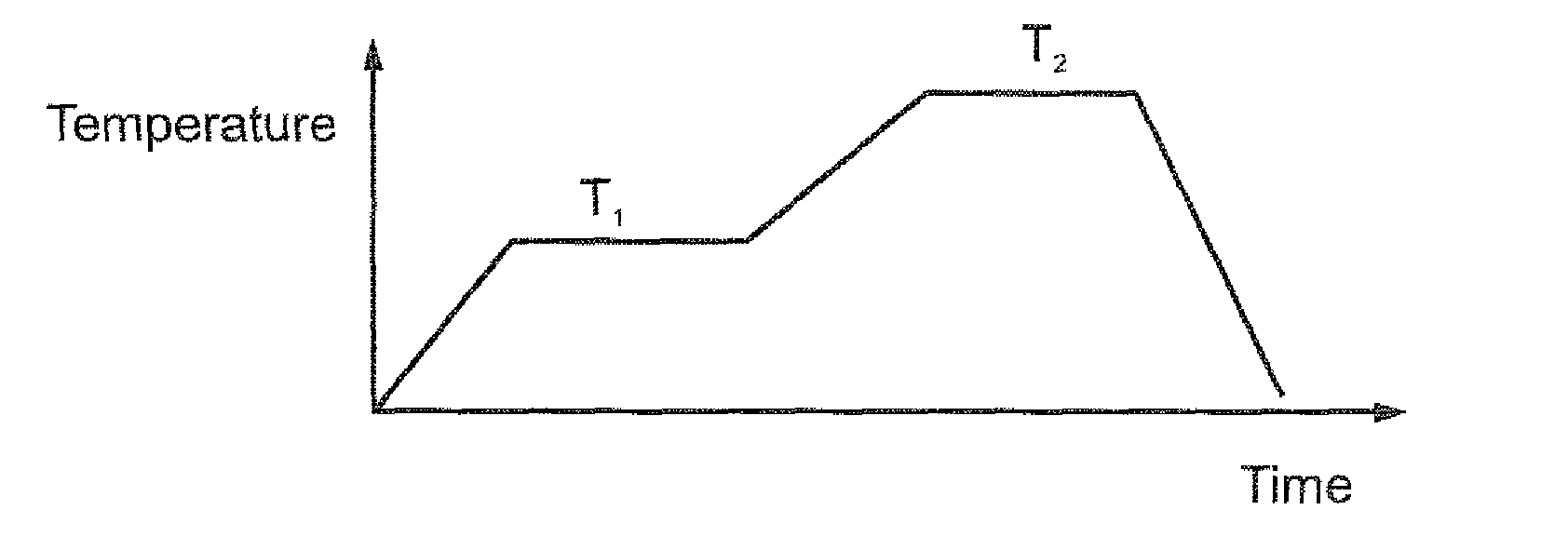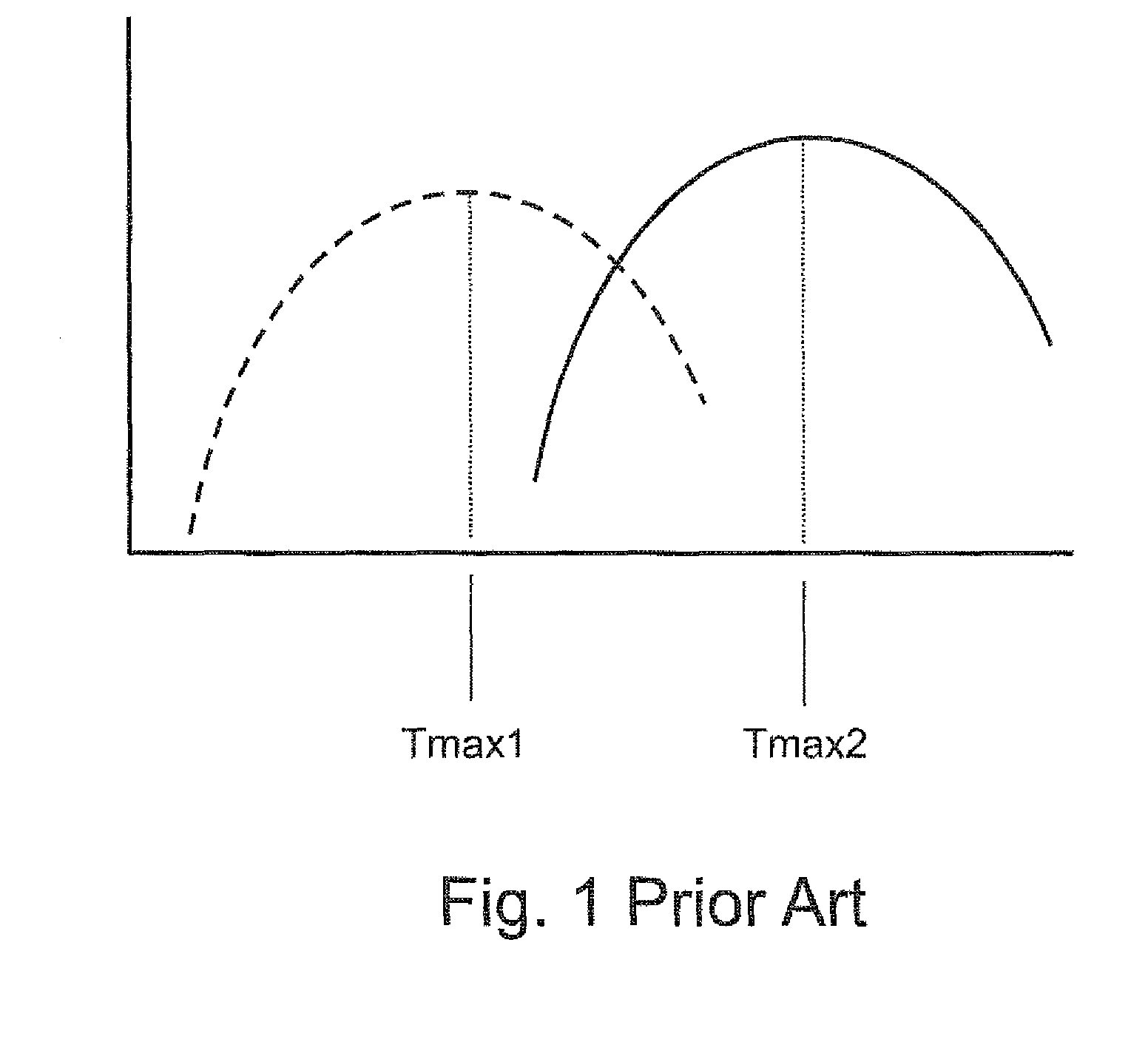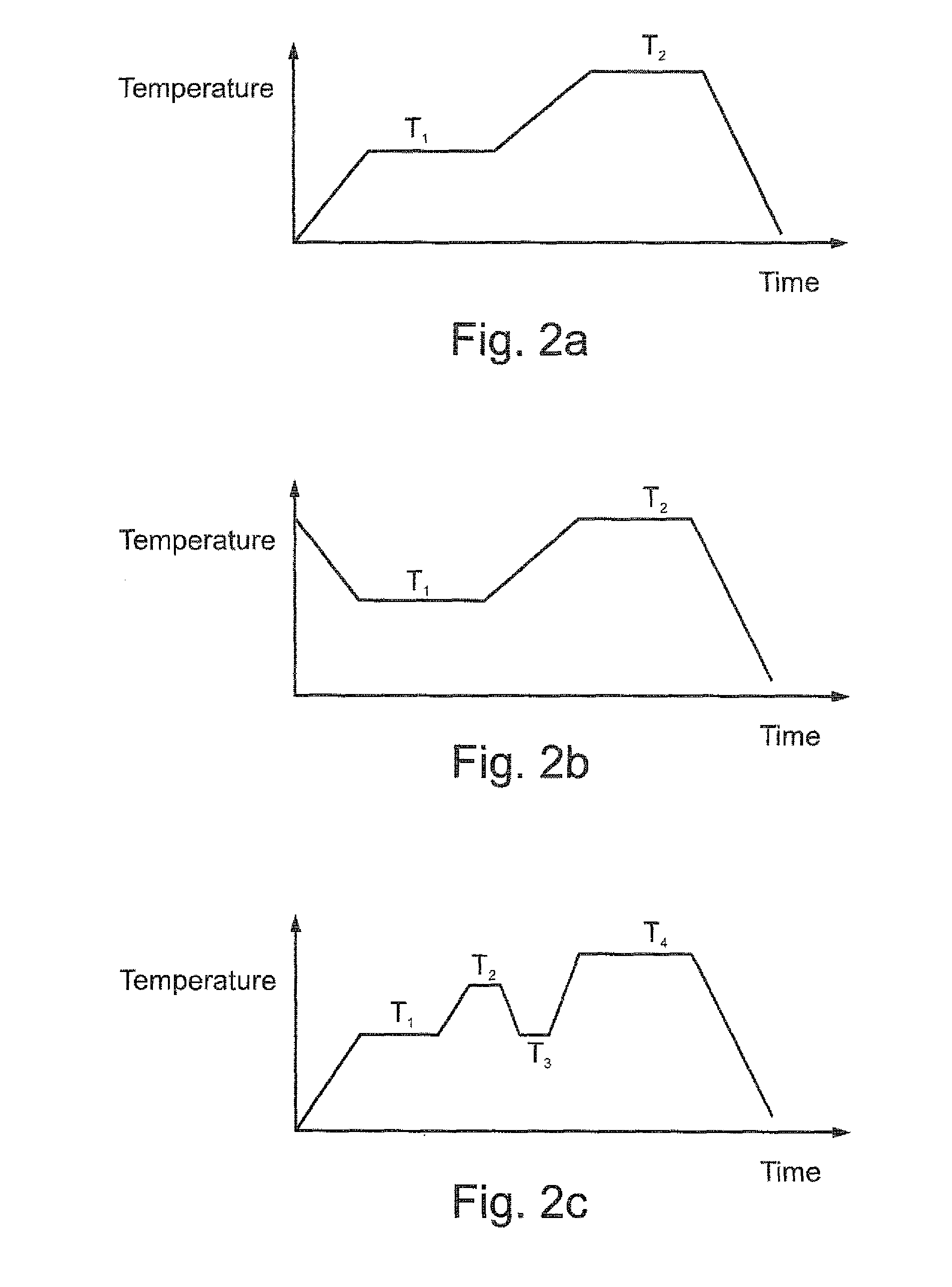Glass-ceramic materials having a predominant spinel-group crystal phase
- Summary
- Abstract
- Description
- Claims
- Application Information
AI Technical Summary
Benefits of technology
Problems solved by technology
Method used
Image
Examples
specific embodiments
[0125]Three specific embodiments of glass-ceramics of the present invention are a glass-ceramic including a Spinel (MgO—Al2O3) crystal phase, a glass-ceramic including a Gahnite-Spinel series ((Zn,Mg)O—Al2O3) crystal phase and a glass-ceramic including a Galaxite ((Mn,Mg)O—Al2O3) crystal phase.
Glass-Ceramic with a Spinel (MgO—Al2O3) Crystal Phase
[0126]Spinel (MgO—Al2O3) is 28% MgO and 72% Al2O3 by weight (a weight ratio of 1 MgO:2.5Al2O3. Some embodiments of glass-ceramics of the present invention with a primary Spinel crystal phase are produced by devitrification of glass compositions including at least 4%, at least 5%, at least 6% and even at least 9% by weight MgO and at least 10%, at least 14% or even at least 16% by weight Al2O3. Considering that in Spinel the weight ratio of MgO to Al2O3 is 1:2.5, some embodiments of glass-ceramics of the present invention with a predominant Spinel crystal phase are produced from glass having an MgO to Al2O3 weight ratio of between about 1:0.5...
examples
[0165]Reference is now made to the following example that, together with the above description, illustrate the invention in a non-limiting fashion
Materials, Instruments and Experimental Methods
Materials:
[0166]Coal ash was obtained from the Rutenberg Power Plant (Ashkelon, Israel), the plant burning coal supplied by TotalFinaElf S.A., South Africa and from the United States. The composition of the South African coal ash was SiO2 (46.4% by weight), Fe2O3 (3.7% by weight), Al2O3 (31.7% by weight), TiO2 (1.8% by weight), CaO (8.7% by weight), MgO (2.1% by weight), SO3 (2.1% by weight), Na2O (0.3 by weight), P2O5 (2.6 by weight), and K2O (0.6% by weight). The composition of the American coal ash was SiO2 (58.6% by weight), Fe2O3 (9.2% by weight), Al2O3 (21.3% by weight), TiO2 (1.8% by weight), CaO (4.1% by weight), MgO (1.5% by weight), SO3 (0.6% by weight), Na2O (0.4 by weight), P2O5 (0.3 by weight), and K2O (2.2% by weight).
[0167]Rutile sand was obtained from Richards Bay Iron and Tita...
PUM
| Property | Measurement | Unit |
|---|---|---|
| Fraction | aaaaa | aaaaa |
| Fraction | aaaaa | aaaaa |
| Percent by mass | aaaaa | aaaaa |
Abstract
Description
Claims
Application Information
 Login to View More
Login to View More - R&D
- Intellectual Property
- Life Sciences
- Materials
- Tech Scout
- Unparalleled Data Quality
- Higher Quality Content
- 60% Fewer Hallucinations
Browse by: Latest US Patents, China's latest patents, Technical Efficacy Thesaurus, Application Domain, Technology Topic, Popular Technical Reports.
© 2025 PatSnap. All rights reserved.Legal|Privacy policy|Modern Slavery Act Transparency Statement|Sitemap|About US| Contact US: help@patsnap.com



